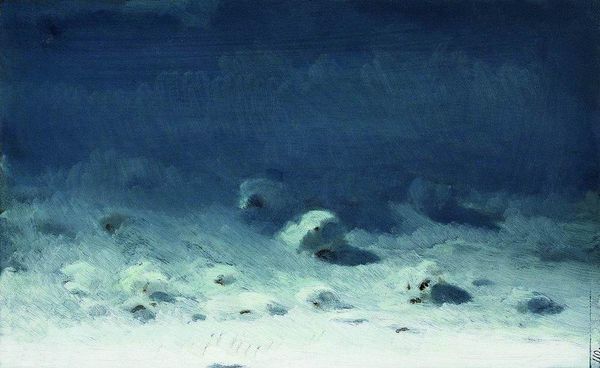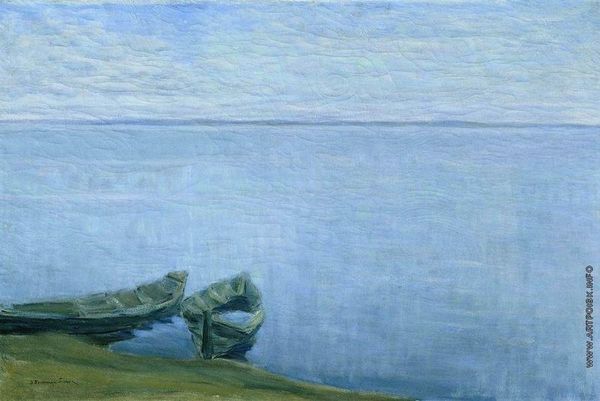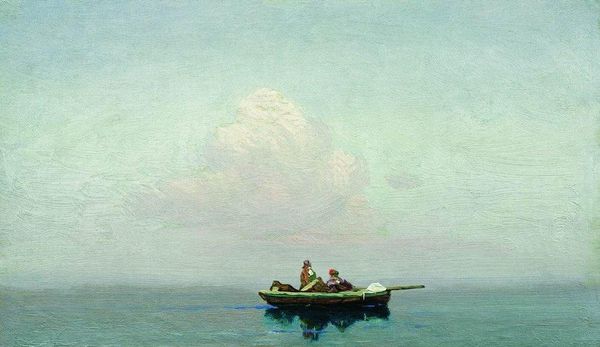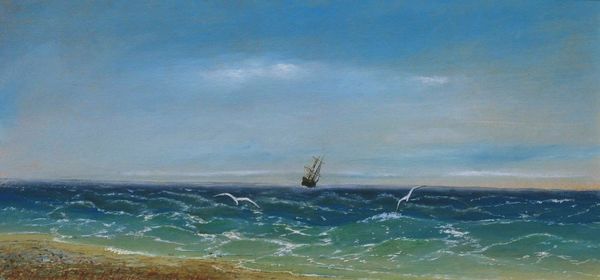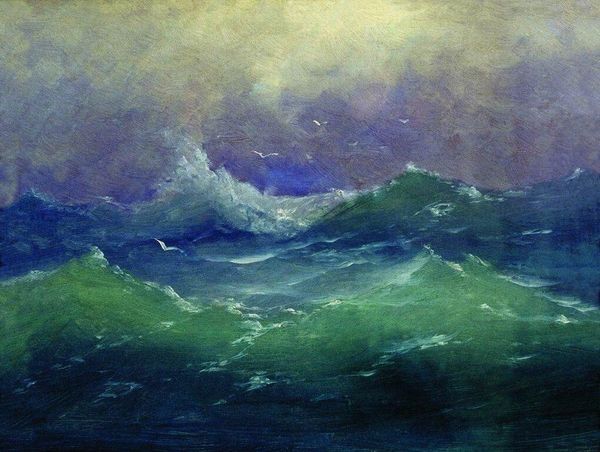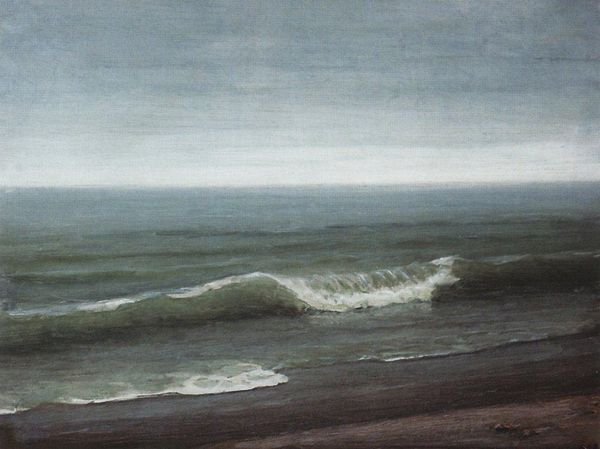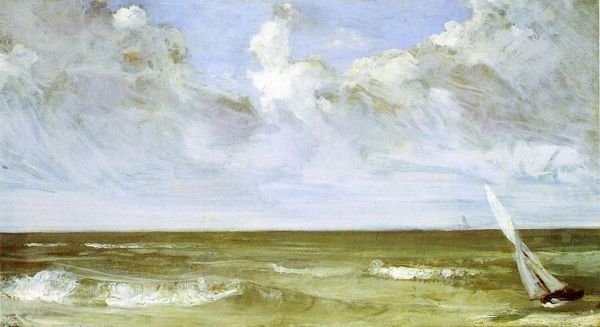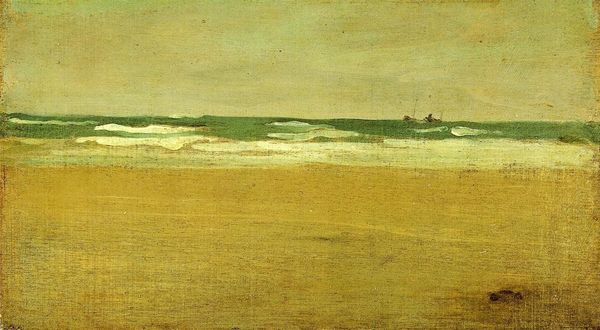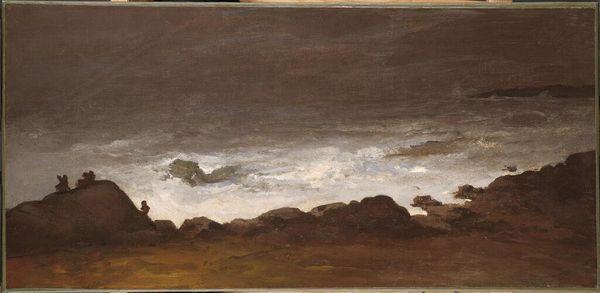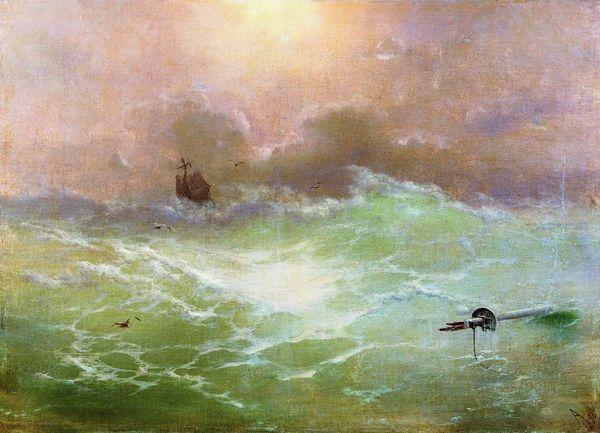
Copyright: Public domain
Curator: Looking at Arkhyp Kuindzhi’s “A boat in the sea. Crimea,” painted in 1875, what’s your immediate take? Editor: There's a starkness, almost a quiet drama, in the sheer simplicity of it. Just the churning water, pale sky, and this tiny vessel carrying figures. The materiality of those rough brushstrokes feels like the texture of the sea itself. Curator: Indeed. Kuindzhi's use of oil on canvas, coupled with the "plein-air" technique, emphasizes an attempt to capture the ephemeral qualities of light and atmosphere. What interests me most is the social context, the Crimean War and its aftermath perhaps influenced his vision. This could be read as a representation of the powerless in the face of vast, impersonal forces, the intersection of human life with natural struggle. Editor: It’s impossible to ignore how the very act of painting "en plein air," exposed Kuindzhi himself to the elements, forcing a direct confrontation with his subject. And his technique highlights materiality of labor—every brushstroke shows the physical process of making. It shifts the gaze towards the lived experience both of artist and the depicted subject, not just representation but action and social place. Curator: It speaks to issues of marginality and resilience, echoing feminist and postcolonial readings about the depiction of bodies in landscapes, but let's think about how the location itself informs meaning: Crimea and its contested terrains! This region, grappling with power dynamics, represents a literal and figurative border, shaping Kuindzhi's approach in painting as political statement and intervention within social sphere. Editor: The intense observation necessary for such realism also becomes important—the close observation, of sea and weather, transforming these individuals laboring against sea into a monumental subject, turning their ordinary work into a kind of subtle heroism through its own materiality. Curator: The painting's beauty stems precisely from its ambiguity. It invites a spectrum of interpretations centered on themes of resilience, migration, and societal anxieties relevant still to modern conversations surrounding social justice and collective identity in moments of turmoil. Editor: Right. I agree it creates this sort of visceral experience: where craft, representation, and human struggles form an inseparable unity – a truly compelling testament to our capacity for enduring even in bleakest circumstances through direct, honest work and creative activity!
Comments
No comments
Be the first to comment and join the conversation on the ultimate creative platform.
